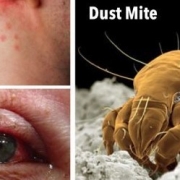United States: The proliferation of mold contamination And Claims:
Washington DC – The discovery of extensive mold contamination in property throughout the United States has led to the introduction of legislation in various states in an effort to combat this problem. Representatives from California, Maryland, New York, and Texas have all introduced legislation that focuses on educating and protecting the public from the potentially hazardous effects of mold. The following describes both pending legislation, as well as legislation that has been passed into law across the United States.
California:
Senate Bill 732 (Ortiz):
SB 732 was introduced on February 23, 2001, and passed into law on September 13, 2001 as the Toxic Mold Protection Act of 2001. SB 732 mandates that the State Department of Health Services convene a task force comprised of various individuals including rental property owners, insurers, builders, and building managers to advise the department on the development of standards for assessment of mold in indoor environments and for mold’s remediation. The department, acting under advisement from the task force, is then responsible for public education about the health effects of mold, methods of prevention, methods of identification, as well as available contact information. Finally, this bill requires that any person who sells, transfers, or rents residential, commercial or industrial real property, or any person or entity that owns, leases, or operates a building, who has knowledge of the existence of mold is required to disclose that information to a potential buyer or tenant.
Assembly Bill 284 (Jackson):
This bill was introduced on February 16, 2001, and was passed into law on September 13, 2001. It requires the California Research Bureau, which is part of the California State Library, in consultation with the State Department of Health Services, to perform a study of, and publish findings on, fungal contamination in indoor environments, and to organize meetings of a review panel to assist in the preparation of appropriate content for the study. This bill further requires that those findings be submitted no later than January 1, 2003, to the Legislature and Director of Health Services.
Assembly Bill 178 (Cox):
AB 178 was introduced on February 6, 2001. If passed, this bill would add visible mold growth on interior walls, ceilings, and floors, if it exceeds specified standards, to California’s list of officially designated “dangerous conditions” constituting a substandard residential dwelling. AB 178 would further require landlords of residential property to disclose to potential tenants the existence of the mold, or else the landlord could face civil fines of up to $1,000 for each violation. AB 178 has not yet been enacted into law. A copy of this pending bill may found at:.
San Francisco Ordinance 125-01 (Newsom, et al.):
Ordinance 125-01 was passed into law in San Francisco, California on June 4, 2001. This ordinance consolidated various nuisance provisions that were already part of the local code into a single article. San Francisco had already declared that lead hazards, rodents, waste contamination, etc., to be public nuisances. The city council determined that mold and mildew also posed a similar threat to San Francisco’s citizens, and included mold and mildew in its list of nuisances. The ordinance provides that the minimum criminal penalties for property owners, landlords, or any other individual responsible for the elimination of the nuisance, ranges from $25 to $1,000 for non-compliance with the provisions of the ordinance.
Maryland:
Senate Bill 283 (Conway, et al.):
SB 283 was introduced on February 20, 2001, and was signed by Maryland’s governor on May 18, 2001. SB 283 establishes a Task Force on Indoor Air Quality. The goal of the task force is to study the nature, location, and extent of health and environmental risks posed to workers as a result of mold, spores, and other toxic organisms located in the HVAC systems of office buildings. The task force is then responsible for recommendations regarding the prevention of illness, and the provision of educational information.
New Jersey:
Senate Resolution 77 (Bennett, et al.):
SR 77 was introduced on November 9, 2000, and adopted as law on May 3, 2001. SR 77 urges the Commissioners of Health and Senior Services and Community Affairs to provide information, assistance in the identification and remediation, as well as research into the health effects of infestations of stachboytrys atra mold.
New York:
Senate Bill 5799 (Marcellino, et al.): SB 5799 was introduced earlier this year, and in November, 2001, reached the Rules Committee. It has not yet been enacted into law. SB 5799, the proposed Toxic Mold Protection Act, would establish a task force to advise the New York Department of Health on the development of standards for safe levels of the presence of mold, so that permissible exposure limits may be adopted and enforced by the state. The task force would also be charged with the responsibility of determining potential health risks through the use of scientific data. The task force would also develop and then advise on the state’s adoption of standards for mold remediation. Finally, SB 5799 also includes a notice provision that would require a seller or transferor of real property to provide written notice to a prospective buyer regarding the presence of mold in the property if the mold exceeds permissible established levels, or constitutes infestation per the task force’s findings.
Texas:
House Bill 2006 (Naishtat):
HB 5799 was introduced on February 22, 2001, but has been left pending in committee since May 9, 2001. This bill is an act relating to indoor air quality in public school buildings. Although HB 5799 is not only concerned with the presence of mold in the indoor environment, mold is listed as a contaminant that must be evaluated for its potential effects on the health of the students. HB 5799 would create a board of individuals responsible for establishing health guidelines and standards that must be followed in Texas public schools, as well as conduct a statewide education program regarding the importance of improving the school’s indoor air quality.
Chapter 5, Subchapter L, Article 5.96 (Insurance Commissioner Jose Montemayer):
On June 26, 2001, the Texas Insurance Commissioner convened a series of informational hearings throughout Texas to address the recent influx of mold claims by homeowners within the state. These hearings elicited data that showed in the course of 18 months, the claim frequency arising from mold had grown more than six fold. Further, the cost of the average mold claim was found to be approximately $18,000. This amount is 4.7 times greater than the cost of an average homeowner’s claim, and 5.6 times the cost of an average non-mold related water damage claim. These figures alerted the insurance commissioner to the fact that the increasing occurrences of mold claims would likely drive up the cost of homeowner’s insurance, rendering it difficult to purchase. In response, an order was written and adopted on November 28, 2001, that retains coverage for the removal of mold that is related to certain water damage, but eliminates coverage from high-priced procedures, such as testing, treating, containing or disposing of mold beyond that necessary to repair or replace property that is physically damaged by water. The order also provides coverage in the basic policy for removal of mold that results from water discharge, leak or overflow that is sudden and accidental, including those that are hidden or concealed. The standard Texas homeowner’s policy forms will be rewritten to account for these changes. Insurers may offer the new coverage as early as January 1, 2002, but no later than January 1, 2003.


 Everyday Health.com
Everyday Health.com 



